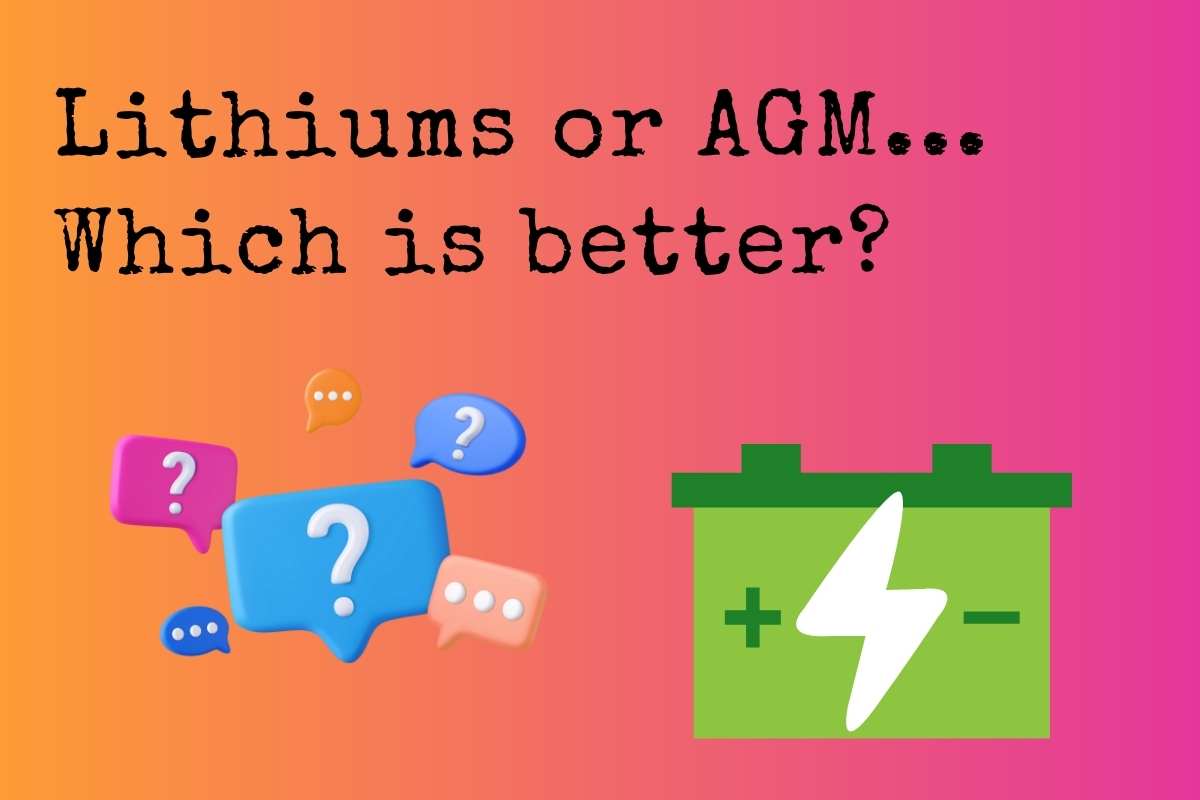Batteries for your RV
The quest for reliable and efficient mobile energy solutions often leads enthusiasts to choose between two dominant battery technologies: Lithium and AGM (Absorbed Glass Mat). Both have carved out significant niches in the world of RVing, boating, and off-grid living. While lithium batteries have gained popularity for their lightweight and high-energy density, AGM batteries are appreciated for their durability and maintenance-free design. Each type presents unique benefits, but they also come with their own set of challenges. So, how does one decide between these two? Understanding the nuances, from charge cycles to installation complexities, can make all the difference. This article aims to shed light on the specifics of both lithium and AGM batteries, guiding you through their pros and cons and ultimately helping you navigate the decision-making process for your specific energy needs.
Below you will see the pros and cons of each type of battery.
Here is a selection of Batteries for you to look at:
Lithium Batteries for RVs: Pros and Cons
Pros:
-
Longevity: Lithium batteries often outlast traditional lead-acid counterparts, with the ability to endure thousands of charge-discharge cycles.
-
Lightweight: They offer a higher energy density, meaning more power is packed in a lighter package, crucial for RVs with weight constraints.
-
Depth of Discharge: Lithium batteries can be safely discharged up to 90% of their capacity without causing significant degradation, unlike other battery types.
-
Efficiency: They exhibit consistent voltage levels, ensuring that appliances run effectively even when the battery’s charge is low.
-
Fast Charging: Capable of accepting a rapid charge, lithium batteries reduce generator run-time or maximize solar input.
Cons:
-
Initial Cost: The upfront expense of lithium batteries is notably higher than AGM or flooded batteries.
-
Temperature Sensitivity: Extreme cold can impede their ability to charge, potentially requiring temperature-controlled storage in very cold climates.
-
Complexity: Advanced battery management systems (BMS) are often needed to safeguard against overcharging, overheating, or deep discharging.
-
Limited Historical Data: As a relatively newer technology in the RV scene, long-term field data is still accumulating.
In summation, while lithium batteries present enticing advantages for the modern RVer, it’s essential to weigh the benefits against the costs and potential limitations.
AGM Batteries for RVs: Pros and Cons
Pros:
-
Maintenance-Free: Unlike flooded lead-acid batteries, AGM (Absorbed Glass Mat) batteries don’t require water top-ups, making them hassle-free.
-
Leak-Proof & Spill-Proof: Due to their sealed construction, AGMs pose no risk of acid spillage, ideal for RV conditions.
-
Deep Cycle Capabilities: AGM batteries can handle deeper discharges than typical starter batteries, making them suitable for RV house battery applications.
-
Faster Charging: They generally accept charge quicker than flooded counterparts, reducing generator run-time or maximizing solar input.
-
Vibration Resistant: Their robust design is less susceptible to damage from vibrations or shocks, a bonus for traveling on varied terrains.
Cons:
-
Cost: AGM batteries are typically more expensive upfront than traditional flooded batteries.
-
Weight: They tend to be heavier than lithium-ion batteries, which might matter for RV weight considerations.
-
Lifespan: While they outlast flooded batteries, AGMs have a shorter lifespan than lithium batteries, especially with regular deep discharges.
-
Efficiency: When compared to newer technologies like lithium, AGMs aren’t as efficient in energy storage or discharge rates.
In conclusion, while AGM batteries offer several advantages for RV users, considering the specific needs and budget is crucial when deciding the best fit for an RV power system.
